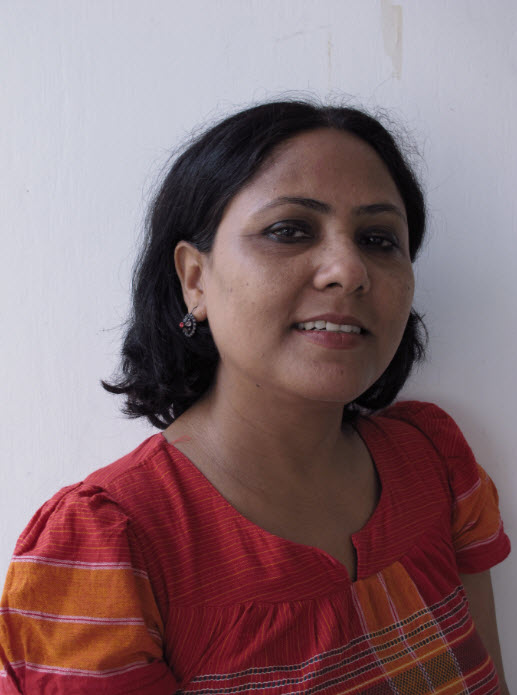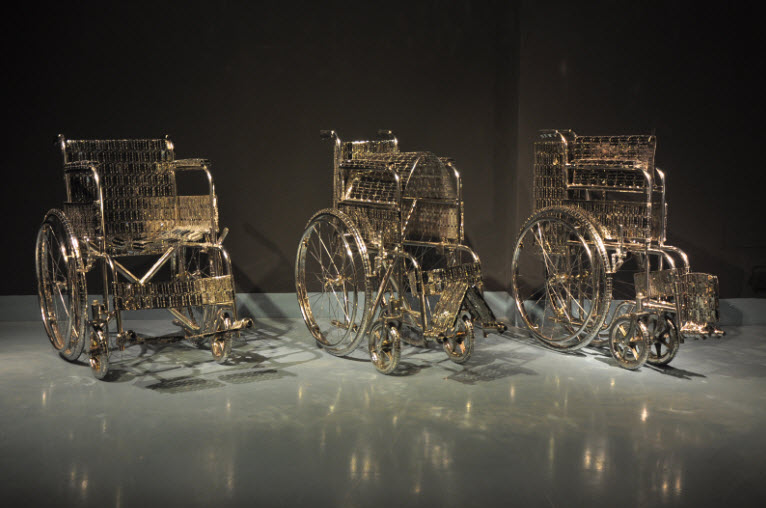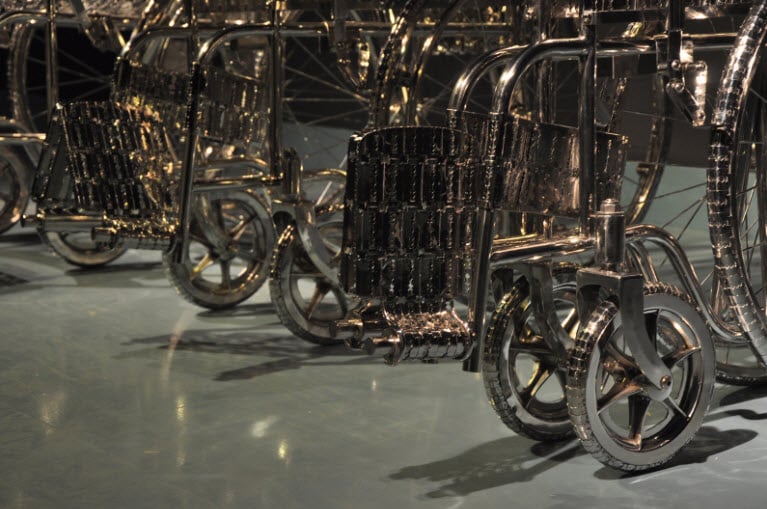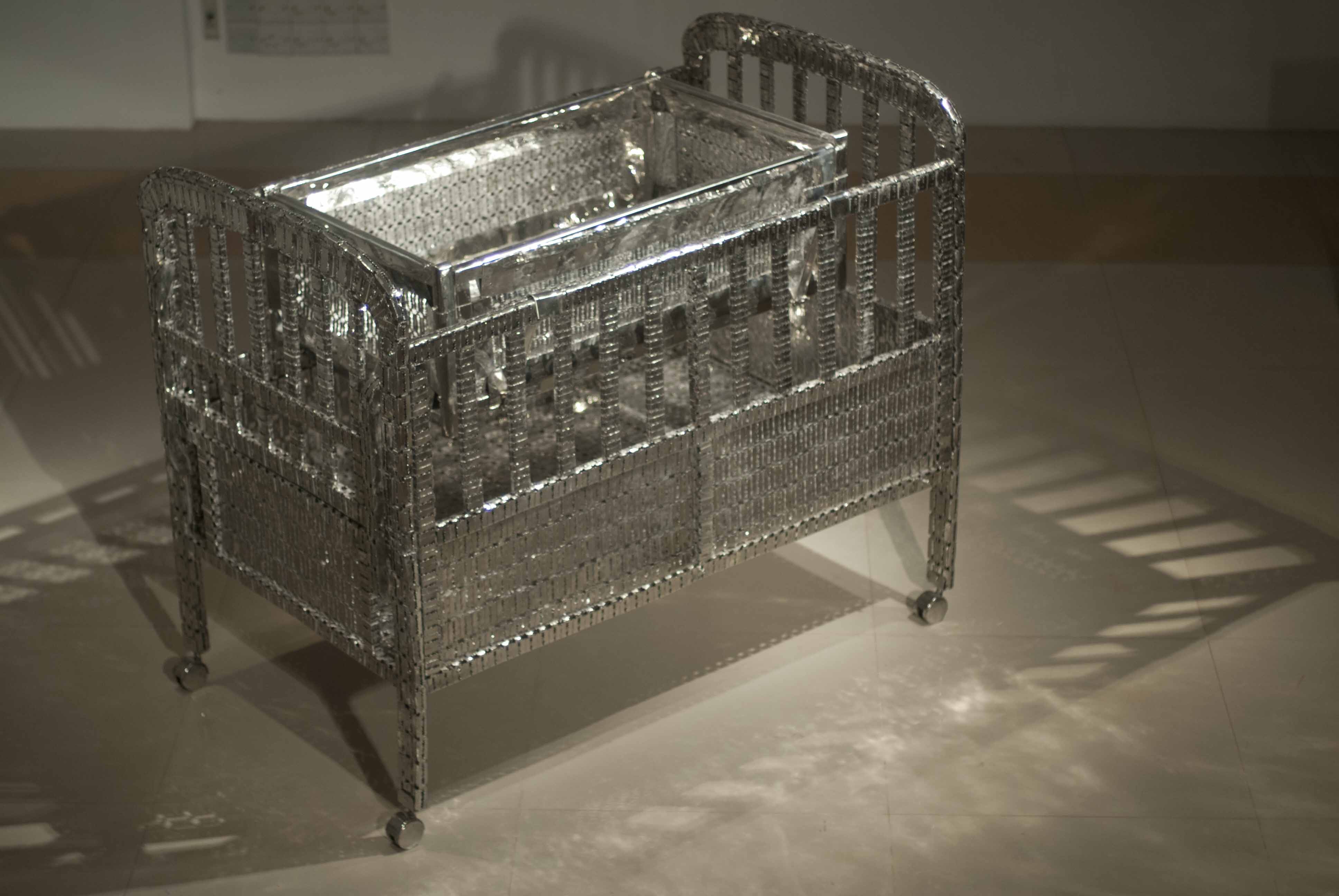Art & Exhibitions
artnet Asks: Bangladeshi Artist Tayeba Begum Lipi
Her razor blade sculptures reference the violent practices used in her native country.

Her razor blade sculptures reference the violent practices used in her native country.

Bangladeshi artist Tayeba Begum Lipi works in a variety of media that highlight the violence against women in her country, while also showcasing their fortitude. In her sculptural works, Lipi often uses stainless steel razor blades as a reference to the dangerous practices used during childbirth in less developed regions. One such example was Let’s Take a Break, a bathtub constructed from razor blades in her recent group show at Sundaram Tagore Gallery. The artist looks to her past for inspiration, and exhibits the pain she shares with women who have suffered.
Tell us about your background in art.
My educational background is in drawing and painting. But eventually I dealt with different media. I have extended my art practice to installation, video work, sculpture, photography, and occasionally print media.

Tayeba Begum Lipi, Agony (2015). Stainless steel made razor blades. a. 104 x 66 x 92 cm b. 107 x 51 x 92 cm c. 110 x 28 x 92 cm. Courtesy of Sundaram Tagore Gallery and the artist. Photo by Tayeba Begum Lipi.

Tayeba Begum Lipi, Agony (detail). Photo by the artist.
How has your work evolved over time?
I was a hardcore painter during my [time in school]. In the mid-1990s, I started exploring different materials. Along with my partner, artist Mahbubur Rahman, we have invited like-minded friends to come out of the studio spaces to explore the outside world, and then do something with the materials available around the sites. By exploring the materials and ideas first-hand, I gradually tried to evolve my work. [During the 1990s], I was trying to understand my own art practice and myself. In 2000, alongside Rahman, I did series of artist residencies abroad, at the Irish Museum of Modern Art, the Art Council of Central Finland, and Gallery 68elf in Cologne. These six-month long European experiences radically changed my artistic and organizational practice.
What has been the highlight of your career so far?
The highlights of my career include “Frontiers Reimagined,” an exhibition at the 56th Venice Biennale in 2015 and at the Museo di Palazzo Grimani, curated by Sundaram Tagore Gallery and Marius Kwint; “CiCLO (CYCLE)” at CCBB São Paulo and Bello Horizonte in Brazil, curated by Marcello Dantas; “No Country” as part of the Guggenheim UBS MAP Global Art Initiative at the Guggenheim in New York; the Asia Society Hong Kong Center; CCA Singapore curated by June Yap; the 14th Jakarta Biennale in Indonesia; the Colombo Biennale in 2012; the Bangladesh Pavilion at the 54th Venice Biennale in 2011; and the upcoming show with Rahman at the Eli and Edythe Broad Museum at Michigan State University from March to August in 2016.
What has been the greatest challenge you’ve faced so far?
Being one of the five participating artists, as well as one of the two commissioners, of the first ever Bangladesh Pavilion of at the 54th Venice Biennale in 2011 was the greatest challenge.
How do you evaluate success as an artist?
I am satisfied that I have never stopped working and never will until I have used all my energy. I was born in a very simple but culturally vibrant family in the countryside of Bangladesh. In a country such as Bangladesh, when someone aggressively pursues his or her artistic practice without knowing where it will finally anchor, I am blessed that I have made my name as an artist.

Tayeba Begum Lipi, My Daughter’s Cot II, (2012). Stainless steel razor blades . 40 x 28 x 48 in. (101.6 x 71.1 x 122 cm.). Courtesy of Christie’s. Photo by Molla Sagar.
If you weren’t an artist, what do you think you would be doing?
I would have been a journalist or writer if I were not an artist. I used to write poetry and short stories in my early life. I was fascinated by journalism and wanted to be a journalist until I visited the Institute of Fine Arts at Dhaka University; that eventually became my final destination.
Out of all the countries you have visited, which has been your favorite? What are some countries you haven’t visited yet but would like to?
Some of my favorites are Italy, England, Nepal, Colombia, and Turkey. I usually love places that have living memories and histories. Africa, Russia, and the United States are the next places I would like to visit.